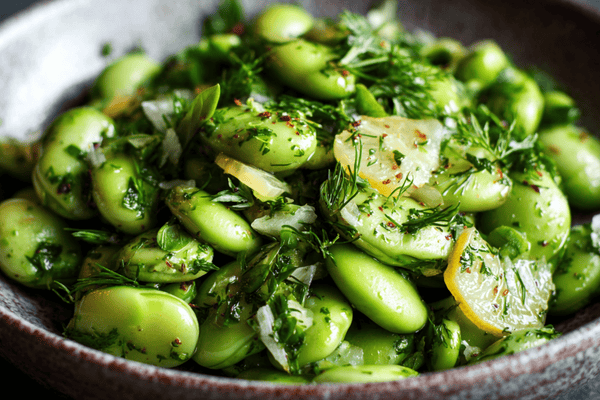 Keeping your knives sharp ensures that they perform to the best of their ability and are safer to use. There are many different ways of sharpening a knife, depending on the type of blade and your personal preference.
Keeping your knives sharp ensures that they perform to the best of their ability and are safer to use. There are many different ways of sharpening a knife, depending on the type of blade and your personal preference.But there are things that you can do wrong when it comes to knife sharpening and it’s important to educate yourself on the best way to sharpen a knife and always be mindful of knife safety.
In this guide, we’ll tell you the correct methods to achieve a sharp knife, how to sharpen a knife properly and safely, and the things you’ll need to avoid.
The Don’ts When Knife Sharpening

You might think that sharpening your knife is as easy as picking it up and running it over a whetstone. But what a lot of people don’t understand is that sharpening a dull knife is something of a skill. It can take some practice and we’d highly suggest spending some time familiarising yourself with the process before you try to sharpen or hone any of your best kitchen knives.
Here come some things you should absolutely avoid when sharpening knives.
Don’t Get Ahead of Yourself
It’s really important to learn how to properly sharpen a knife. While getting used to using a whetstone does involve a learning curve, once you tackle it, this is a skill you’ll have for life. It’s a good idea to use guides like this one, Youtube videos and other online resources to give yourself as much information as possible.
Where you can, we would also recommend practising on knives that you don’t mind getting damaged. We’re all human and make mistakes when learning how to sharpen knives but if you can find an inexpensive or old knife to practise with, this won’t really matter.
That said, we would recommend taking your knives to a professional from time to time. Having them professionally sharpened will get the edge to exactly where it needs to be without removing too much material. In between these visits, you can hone your knife at home to keep it in tip-top condition. That way, you get the best of both worlds.
Don’t Get Distracted
When doing seemingly menial tasks in the kitchen, such as sharpening your knives, it can be easy to do it mindlessly. But knife sharpening is a skilled process so it’s very important to give it your full attention.
While you might think that having a little music on or the TV running in the background won’t do any harm, this could distract you. This is because sharpening a knife isn’t just about looking at the blade, you’ll need to feel it and even listen to the sounds if you want to get the best results. Any background noise will only take away from this.
Don’t Rush the Process

There is no rush to get your knife edge perfect. In fact, if you want the best results, it’s a good idea to take your time.
One of the biggest mistakes that people make when learning to sharpen knives is moving on to a finer grit too soon. They’re of the belief that this will get the blade sharper more quickly but that isn’t the case. In reality, you should be able to perform the paper test successfully even after you have used your coarsest stone.
Only after this should you move on to using finer grits which won’t make the blade any sharper but will polish it and make it more refined.
What’s more, you need to take the time to use the correct number of strokes. How many you need will depend on how dull the blade is. One of the best ways to ensure you get an even finish on both sides is to do one stroke on one side and then one on the other. However, if you’re looking for a more durable finish then it’s usually best to do several strokes on the first side and then move on.
Don’t Be Too Rough
When you buy a high-quality knife, the last thing you want to do is damage it by being too rough during the sharpening process. There’s really no need to go in with brute force; just using the weight of your hands will be more than sufficient.
The key is to use your skills rather than your strength. In fact, if you’re too heavy-handed, you might not get the sharp edge you are looking for.
In between sharpenings, you will need to hone your knives and you’ll normally do this using a steel rod. Again, you don’t need to be rough and we see a lot of people slamming their blades against the rod; don’t do this!
For the best results, use long, smooth strokes and be gentle with the blade edge. You aren’t going to compromise the sharpness by using a delicate touch!
Don’t Use a Knife System
In modern times we are all looking for something that’ll give us the best convenience. Electric knife systems are certainly that, if nothing else. But an electric knife sharpener isn’t the best if you want to keep your blades healthy and give them a longer lifespan.
The problem with these devices is that, when you run the knife blade through them, they’ll often chew it up and scratch it. Moreover, you’ll never get the same degree of sharpness as you would when using something like a sharpening steel or a whetstone.
In addition to that, a knife system doesn’t give you quite as good control over the sharpening process. It’s probably OK to use a knife system for an inexpensive blade but for your best Japanese kitchen knives, we’d suggest using a more traditional method; even if it is a little more time-consuming.
Don’t Misuse Your Knife Between Sharpenings
Every time you sharpen your knife, you are removing some material from the blade. Over time, this is going to mean that your knife needs to be replaced. Naturally, this means that you’ll want to sharpen your knife as little as possible to improve its lifespan.
But if you mistreat your knife in between sharpenings then you’re only going to have to sharpen it more frequently.

Avoid using the knife for anything other than its intended purpose. The reason that there are so many different types of kitchen knives is that each one is designed to do a different job. If you try to bone a joint of meat using a delicate usuba knife, it’s going to dull the blade.
What’s even more disconcerting is that some people use their knives for things other than cooking. Yes, it’s easy to grab a knife off the rack to open that Amazon parcel that’s just arrived but unless that parcel contains a whole new set of knives, we’d strongly avoid doing this.
Store your knives properly on knife racks or in knife blocks and use a suitable cutting board. Treat your knife blades with the respect they deserve and you’ll find that they last much longer. It’s also important to clean them correctly and store them properly. These things will all enhance their longevity.
Final Thoughts
If you own any type of kitchen knife then you will need to sharpen it from time to time. A lot of people use an electric knife system but this isn’t something we would recommend. Instead, you should use a whetstone which will create a super sharp edge, although this does require some learning.
When learning how to sharpen your knives, it’s important to make sure that you avoid doing certain things. Don’t rush the process, use approved knife sharpeners and always make sure that you give your knives your full attention while you’re working on them.


